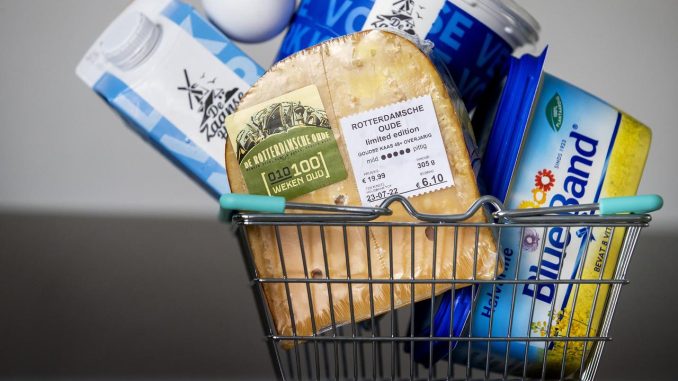
New Calculation Method Impacts Inflation Rate in the Netherlands
Inflation in the Netherlands fell to 3 percent in August. This decline can be attributed, in part, to a new calculation method adopted by the country. Many readers have been left wondering: How exactly is inflation determined?
Statistics Office Develops a Shopping Basket
The statistics office CBS (Central Bureau of Statistics) maintains a shopping basket that includes prices of countless products and services. These prices, taken together, are used to determine the inflation rate. The composition of the basket is continuously evolving, as consumer spending patterns change over time.
Weighing the Components
The standard basket used by CBS assigns weightings to different categories of products and services. Currently, food and drinks make up 12 percent of the basket, housing and energy account for 30 percent, and transport contributes 10 percent. These weightings, however, are subject to change as priorities shift.
Changes in Calculation Approach
In June, there was a significant change in the way inflation was calculated. Previously, Statistics Netherlands only considered the price of a new energy contract. However, in 2022, the cost of new energy contracts skyrocketed while many consumers with existing contracts were not affected immediately. This led to an unrealistic surge in inflation rates. To address this issue, the statistics bureau started considering the actual expenditures of households on energy.
By examining real household spending, Statistics Netherlands aims to provide a more accurate reflection of the impacts of price changes on consumers’ daily lives. This adjustment has helped bring the inflation rate down, providing a clearer picture of the economic situation in the country.
The Inflation Calculation Process
Gathering Data for the Shopping Basket
To determine inflation, CBS collects data on the prices of various goods and services. This information is used to construct the shopping basket, which represents the average consumption patterns of households in the Netherlands. It is important to gather up-to-date and representative data to ensure the accuracy of the inflation calculation.
Assigning Weightings
Once the shopping basket is created, CBS assigns weightings to different categories of goods and services based on their importance in the average household’s budget. The weightings reflect the proportion of total expenditure that each category accounts for.
Price Index Calculation
After assigning weightings to the components of the shopping basket, CBS calculates a price index. This index measures the average change in prices over time. By comparing the current price index with a previous period, the inflation rate can be determined.
Statistical Methods
CBS uses sophisticated statistical techniques to ensure the accuracy and reliability of its calculations. These methods account for various factors that could influence price changes, such as seasonal fluctuations or changes in quality.
Monitoring and Adjusting the Basket
To maintain the relevance of the calculation, CBS periodically reviews and updates the shopping basket. This ensures that it accurately represents the consumption patterns and priorities of Dutch households.
It is important to note that the shopping basket is not fixed forever. As society changes and new products or services emerge, CBS adjusts the composition of the basket to reflect these shifts. This flexibility helps capture the evolving dynamics of consumer behavior.
A More Accurate Picture of Inflation
The recent adjustments to the calculation method for inflation in the Netherlands have provided a more accurate representation of the economic reality faced by households. By considering the actual expenditures on energy, the statistics bureau has corrected an anomaly that was distorting inflation rates.
With an improved calculation method in place, policymakers and economists can make more informed decisions regarding monetary policy, wage adjustments, and social benefits. Additionally, consumers and businesses can have a better understanding of the true impact of price changes on their budgets.
In conclusion, inflation in the Netherlands is determined through a careful process that involves constructing a representative shopping basket, assigning weightings, calculating price indices, and utilizing statistical techniques. The recent changes made by Statistics Netherlands, particularly regarding energy prices and household spending, have improved the accuracy of inflation calculations in the country, providing a clearer picture of economic trends for policymakers and consumers alike.

Be the first to comment